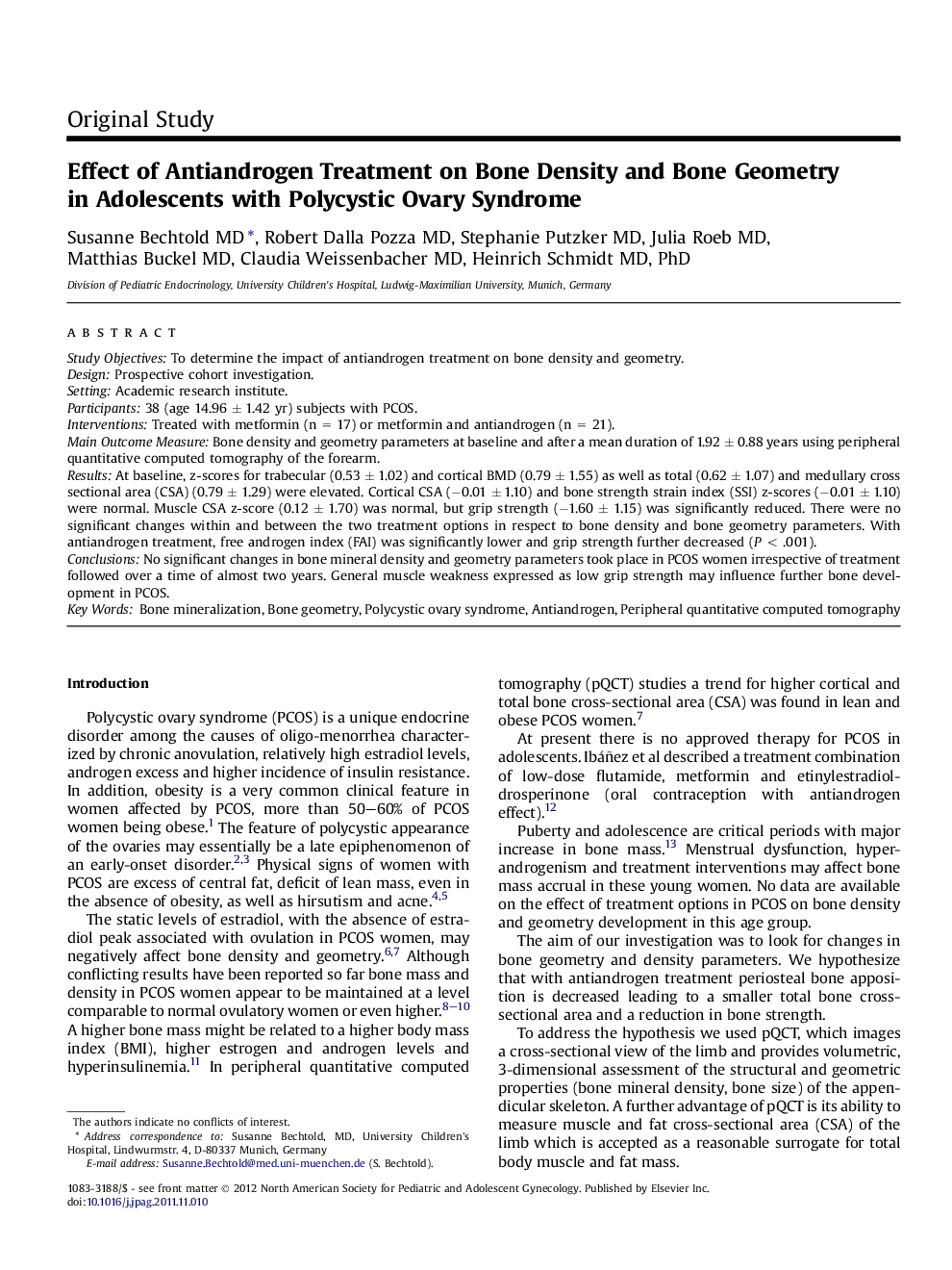| Article ID | Journal | Published Year | Pages | File Type |
|---|---|---|---|---|
| 3959098 | Journal of Pediatric and Adolescent Gynecology | 2012 | 6 Pages |
Study ObjectivesTo determine the impact of antiandrogen treatment on bone density and geometry.DesignProspective cohort investigation.SettingAcademic research institute.Participants38 (age 14.96 ± 1.42 yr) subjects with PCOS.InterventionsTreated with metformin (n = 17) or metformin and antiandrogen (n = 21).Main Outcome MeasureBone density and geometry parameters at baseline and after a mean duration of 1.92 ± 0.88 years using peripheral quantitative computed tomography of the forearm.ResultsAt baseline, z-scores for trabecular (0.53 ± 1.02) and cortical BMD (0.79 ± 1.55) as well as total (0.62 ± 1.07) and medullary cross sectional area (CSA) (0.79 ± 1.29) were elevated. Cortical CSA (−0.01 ± 1.10) and bone strength strain index (SSI) z-scores (−0.01 ± 1.10) were normal. Muscle CSA z-score (0.12 ± 1.70) was normal, but grip strength (−1.60 ± 1.15) was significantly reduced. There were no significant changes within and between the two treatment options in respect to bone density and bone geometry parameters. With antiandrogen treatment, free androgen index (FAI) was significantly lower and grip strength further decreased (P < .001).ConclusionsNo significant changes in bone mineral density and geometry parameters took place in PCOS women irrespective of treatment followed over a time of almost two years. General muscle weakness expressed as low grip strength may influence further bone development in PCOS.
